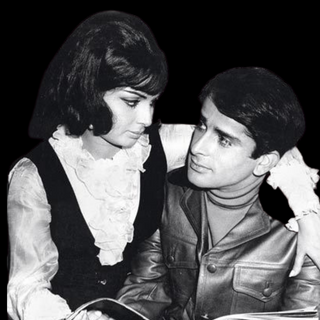
Overrated, Not: ‘Om Shanti Om’
‘Om Shanti Om’ pays tribute to the power of stories and is a reminder to embrace excess in all forms — whether joyful or bitter.

In ‘Overrated, Not,’ we revisit things that were so good, they quickly turned bad, and make a case for why they deserve a comeback.
To put it simply: Om Shanti Om is the best worst movie ever.
It is the best, because it is appallingly fun. It makes you wonder whether anyone even cared about making this a good movie. And its irreverence is endearing. It’s the worst because it’s terrible. It’s so bad, it’s great. Not only that, it was a phenomenon. With unforgettable nonsensical zingers like “oodi baba” and “what the fish” (and some unfortunate, unforgivable ones like “yenna da rascalla“), Om Shanti Om was a laugh riot, the cheesiest horror film, the grandest, campiest hit of a generation.
“The essence of Camp is its love of the unnatural: of artifice and exaggeration… I am strongly drawn to Camp and almost as strongly offended by it,” notes Susan Sontag, in her pivotal essay “Notes on Camp”. Nothing encapsulates this aesthetic better than Om Shanti Om, whose dizzingly garish, dazzlingly bright visuals accompanied by sweeping sonatas and musical flourishes hold us in rapt attention, captivated by the sheer scale of sensory grandeur. It is the most unpretentious spectacle we’d ever seen in Bollywood in the 21st century.
The film also came out at a time when Bollywood was beloved and stars were idolized. Not much was happening in 2007. Headlines were rather dry, and the country seemed to be in a sleepy contentment of sorts — not quite at rest, not quite in tumult either. It was the perfect time, perhaps, to shake things up in entertainment. Enter Om Shanti Om, a film so successful that it was the first to enter the coveted “100 Crore Club.” As an homage to Hindi cinema, Om Shanti Om won hearts for its unabashed love for itself and its roots.
More than a decade later, however, its glitter and sheen has left behind an odd taste. Noted for a mind-boggling 42 cameos of the biggest names in the industry, Om Shanti Om was a celebration of all that makes Bollywood unlikeable now. The glamor, the seductiveness of fame, the chasms of distance between fans and stars, the celebration of being larger than life — all of these are ingredients that make for a decidedly oversaturated palate.
In the years since its release, for one, Bollywood has had to reckon with some tough questions. Nepotism, #MeToo, and most recently, Sushant Singh Rajput’s death by suicide. The very tradition of exclusivity and unreachability that Om Shanti Om romanticized was the one that was, in one way or another, responsible for most of these deep seated issues.
Related on The Swaddle:
Overrated, Not: ‘Why This Kolaveri Di?’
It would thus be easy to dismiss it as self-aggrandizing, representing a strange artefact at the cusp of devotion and denouncement from fans.
Watching Om Shanti Om in 2022, however, shows how malleable to meaning it is. It went from appearing self-referential in a jovial way, to gratingly silly, and back to self-referential in a self-serious way. It is a shape-shifting kaleidoscopic vision that is hard to pin down to a certain time. What you make of it changes with the context in which you watch it. If, in 2007, it was an homage; in 2022, Om’s struggle to make it in Bollywood is a self-aware reckoning with itself, in the most fun manner possible. It is illusory and chimerical, adapting to whatever time period it is invoked in. And so, after spending a long time in dormancy, the film in 2022 once again feels like home, reminding us of our love for escapist fantasy.
The movie also launched Deepika Padukone as the unforgettable Shantipriya — an ode to the dreamy heroines of yesteryears, with kohl-lined eyes and coy smiles capturing millions of hearts. There is much to be said here of the tribute it pays to women in Bollywood, who are often forgotten after attaining a certain “shelf-life” but who are — both metaphorically and literally — resurrected in Om Shanti Om.
That it also starred the ever-endearing Shah Rukh Khan who devoted himself wholeheartedly to such a film helped matters greatly — even elevating the experience. No matter how frivolous, loud, tacky, cheesy, or soppy he had to be, he did it and he put his heart and soul into it. As the free-spirited loafer Om in one life and spoilt star kid Om Kapoor in the next, Shah Rukh’s earnestness and sincerity for these decidedly silly roles is so charming that it’s easy to enjoy the film without irony.
In a way, Om Shanti Om reminds us of what Shah Rukh has done for us as a nation. His ascension to a living legend, whose legacy is under increasing attack by reactionary forces, is a mark of his commitment to his fans. Shah Rukh Khan is, himself, love. If he threw himself into the roles of Om and Om Kapoor with such candor, it is for us, and it is an ode to the world of storytelling no matter how far-fetched.
Through Shah Rukh, Om Shanti Om pays tribute to the power of stories. No matter how dizzingly unrealistic they are, they have something for us whenever we go back to them. Indeed, they can and often are an escape from reality that we crave, but which we have forgotten by taking ourselves and our stories too seriously. But this film, in particular, is a reminder otherwise.
And so, the best and most comforting thing about Om Shanti Om is in how it invokes childlike wonder. At life, at love, and at loss. This is a movie that has all three in excess. Three years into a pandemic where there has been too much of the latter, Om Shanti Om is a reminder to embrace excess in all forms — whether joyful or bitter. Because, when all is said and done: “Picture abhi baaki hai, mere dost.”
Rohitha Naraharisetty is a Senior Associate Editor at The Swaddle. She writes about the intersection of gender, caste, social movements, and pop culture. She can be found on Instagram at @rohitha_97 or on Twitter at @romimacaronii.
Related


‘The Marvelous Mrs. Maisel’ Shows How Society Dismisses Women As ‘Failures’ for Each Career Setback
